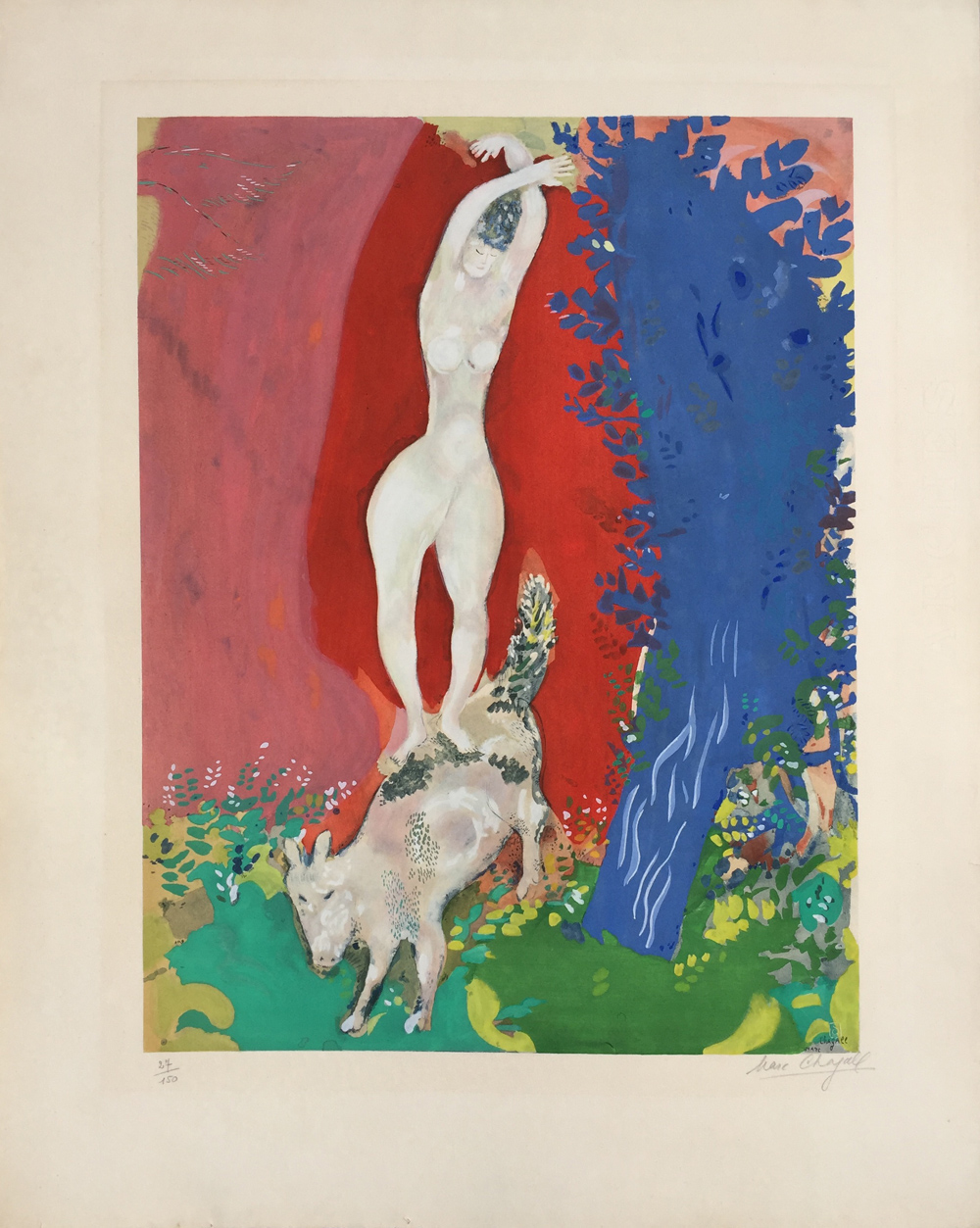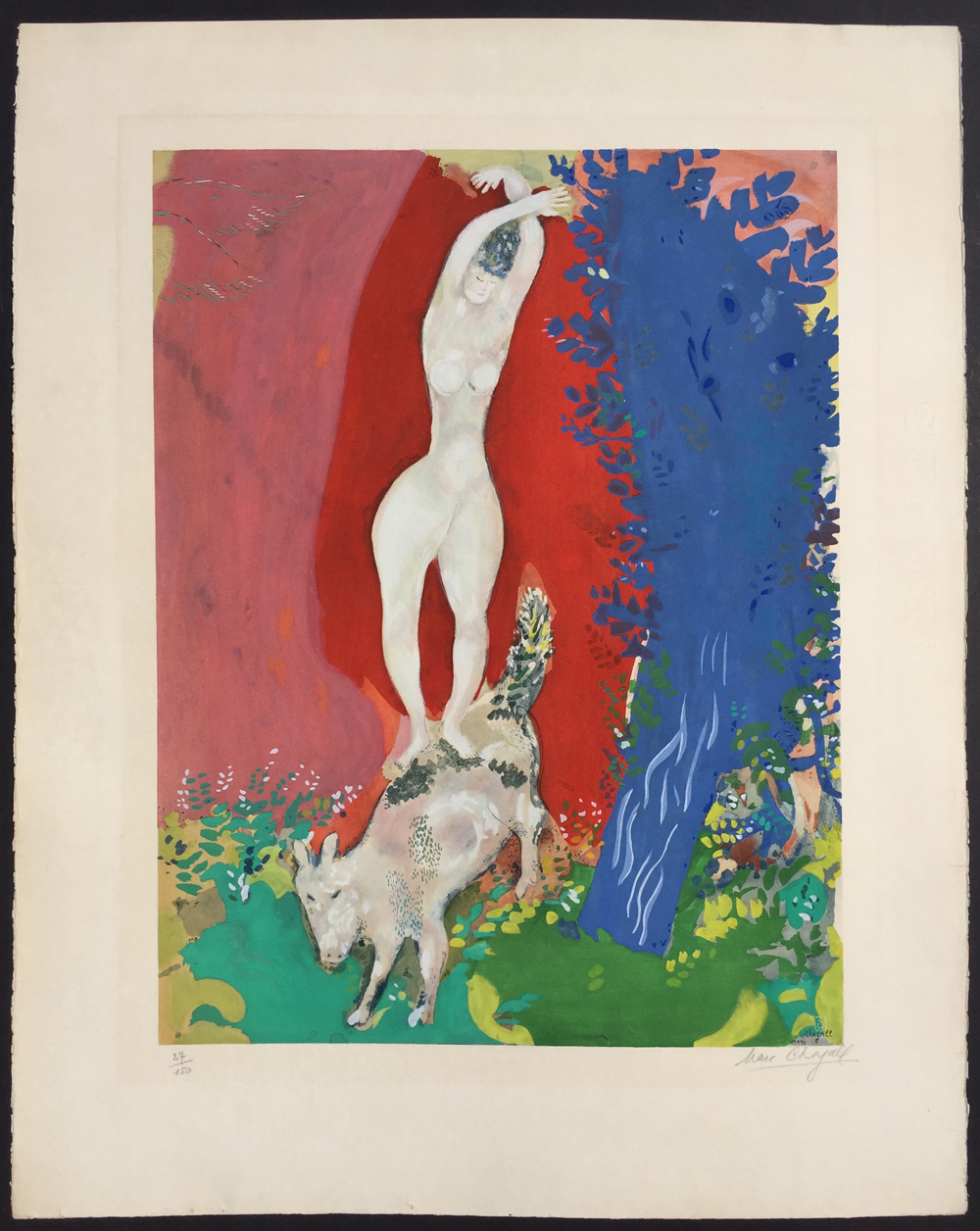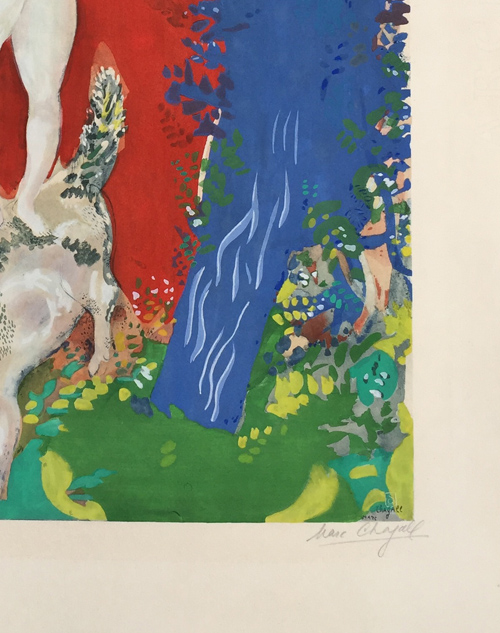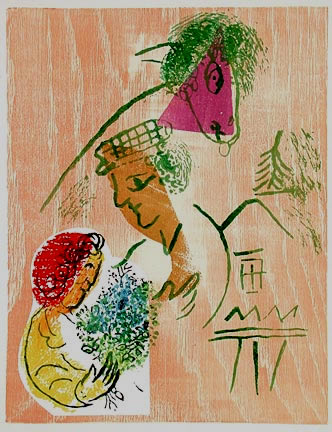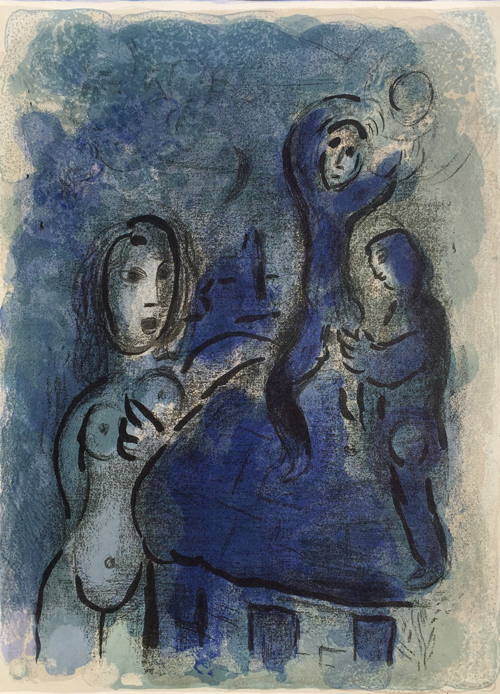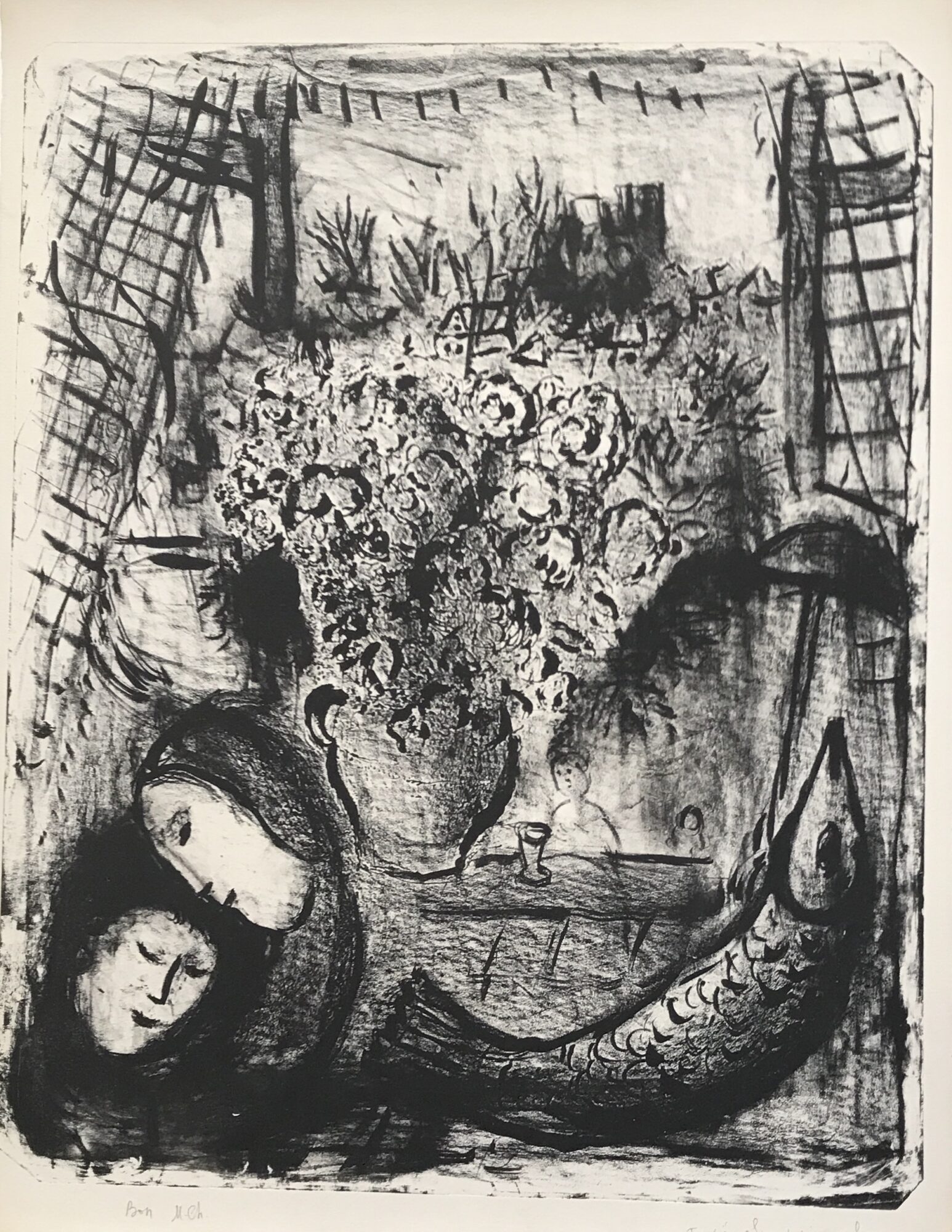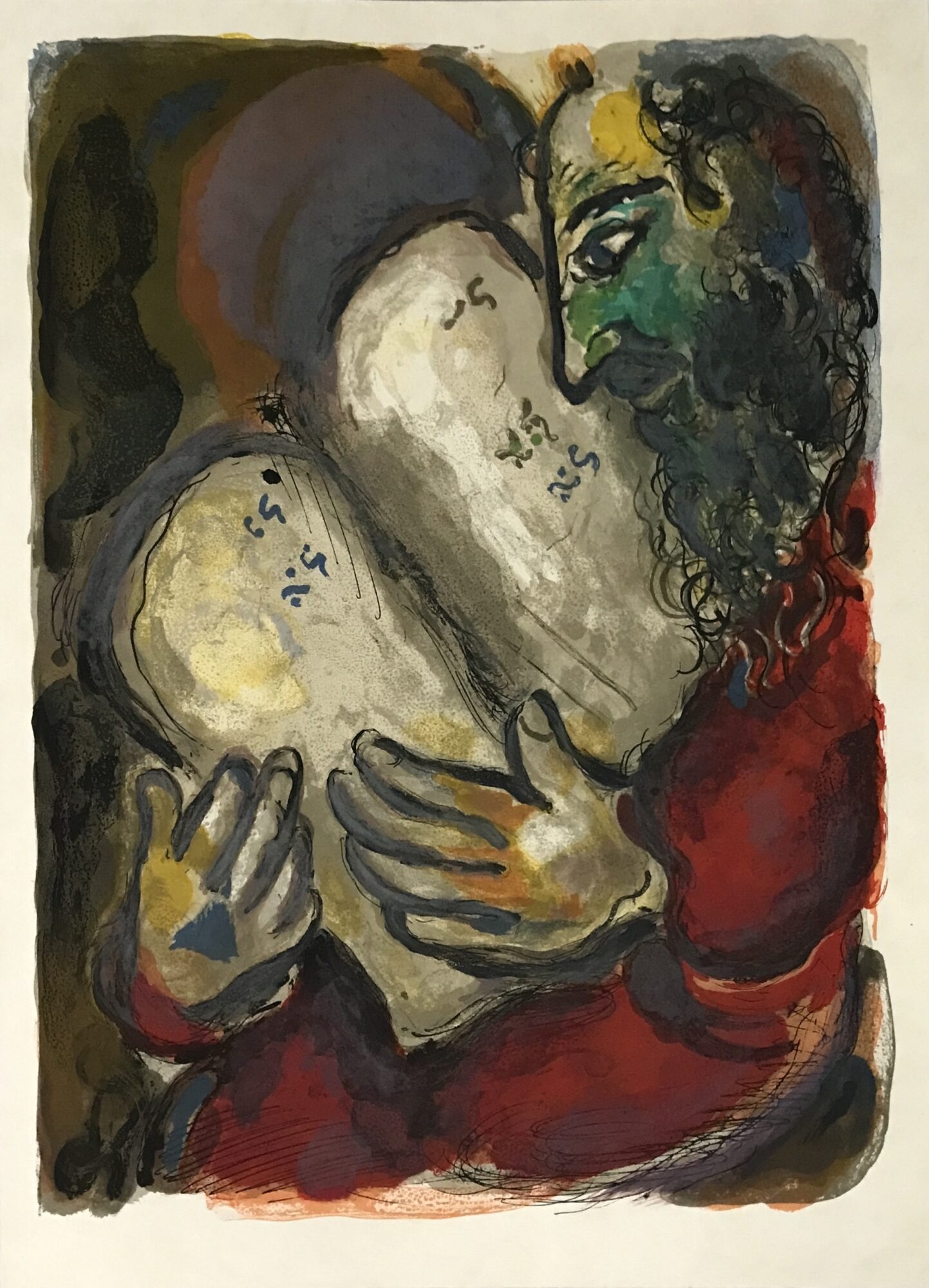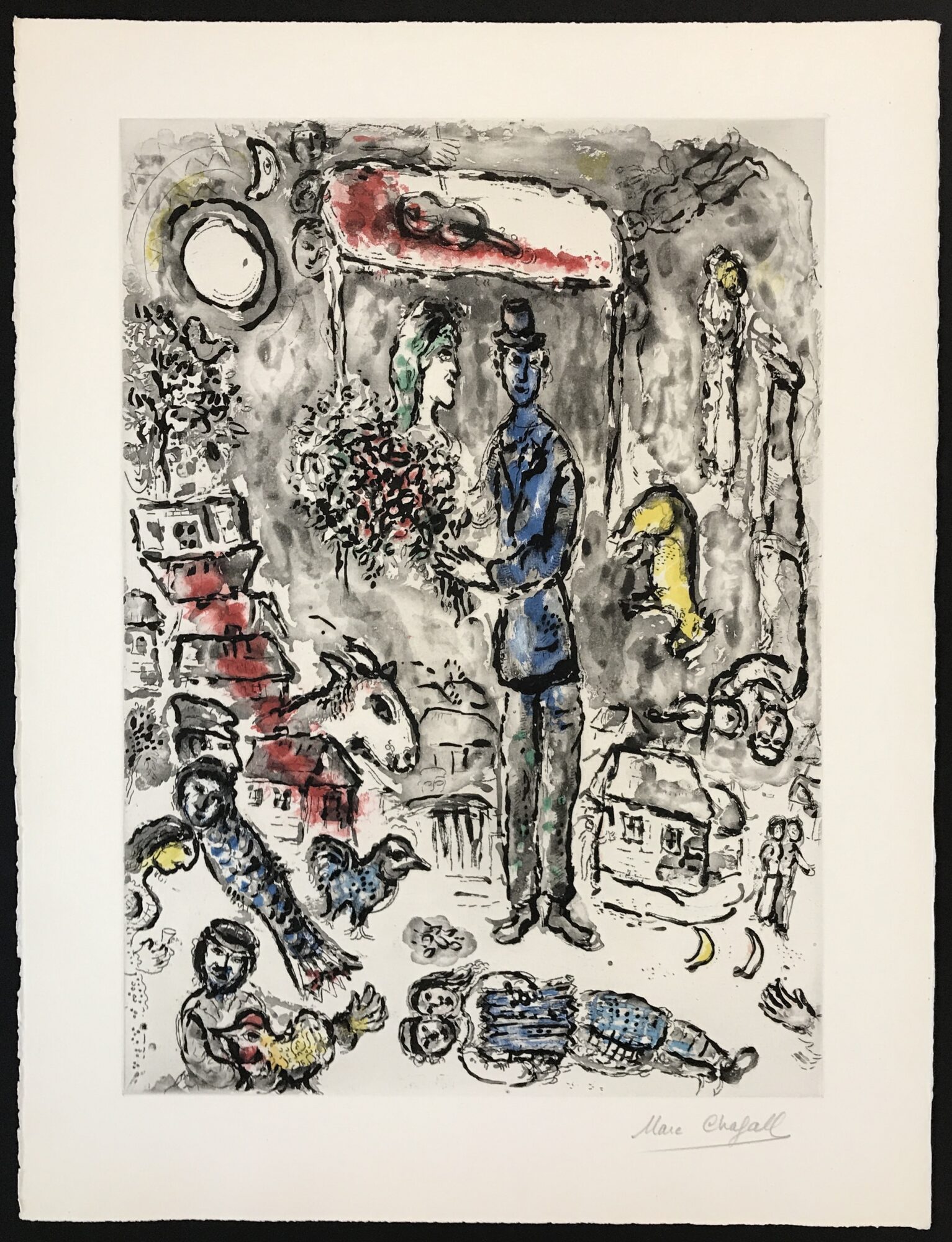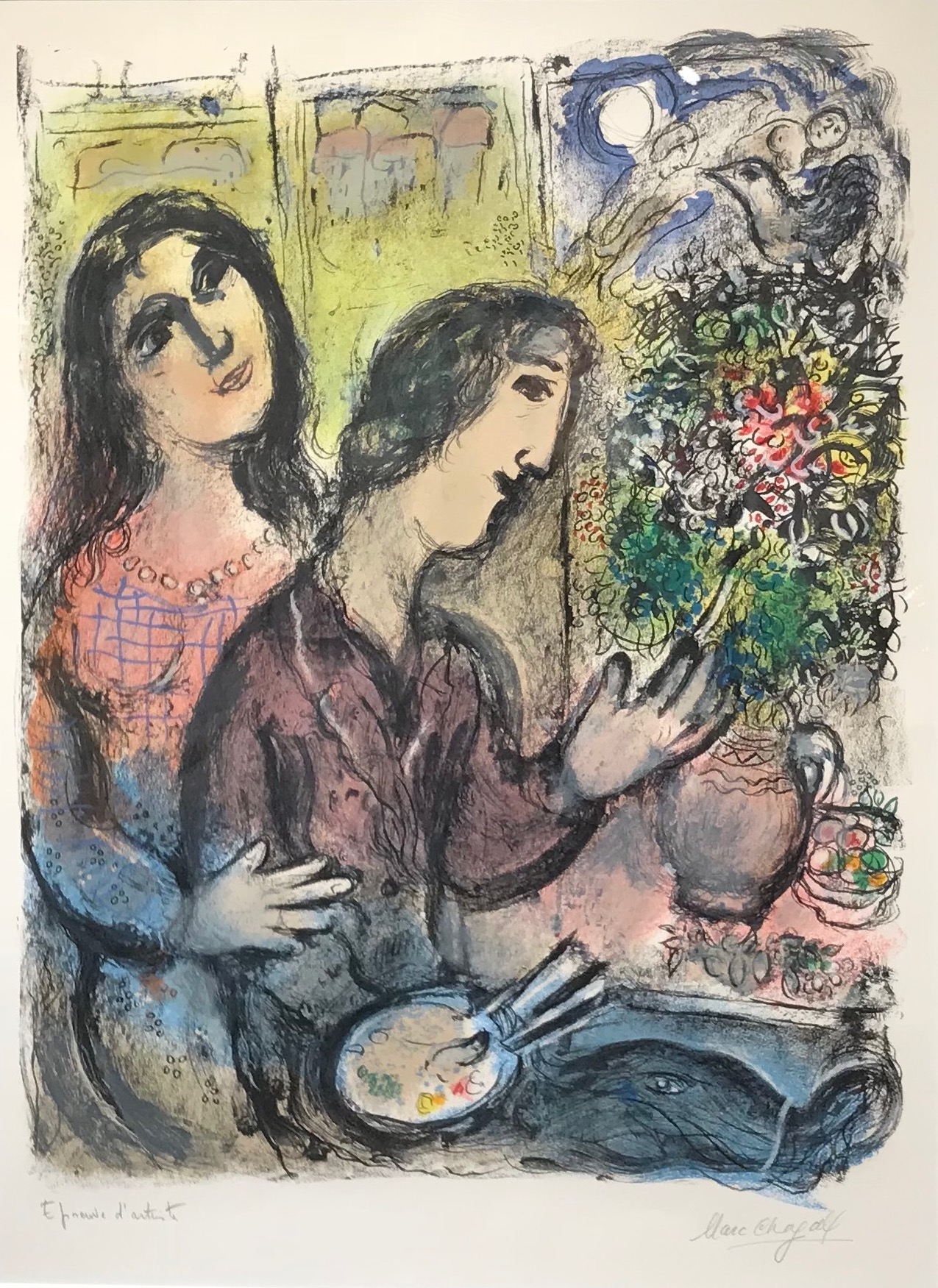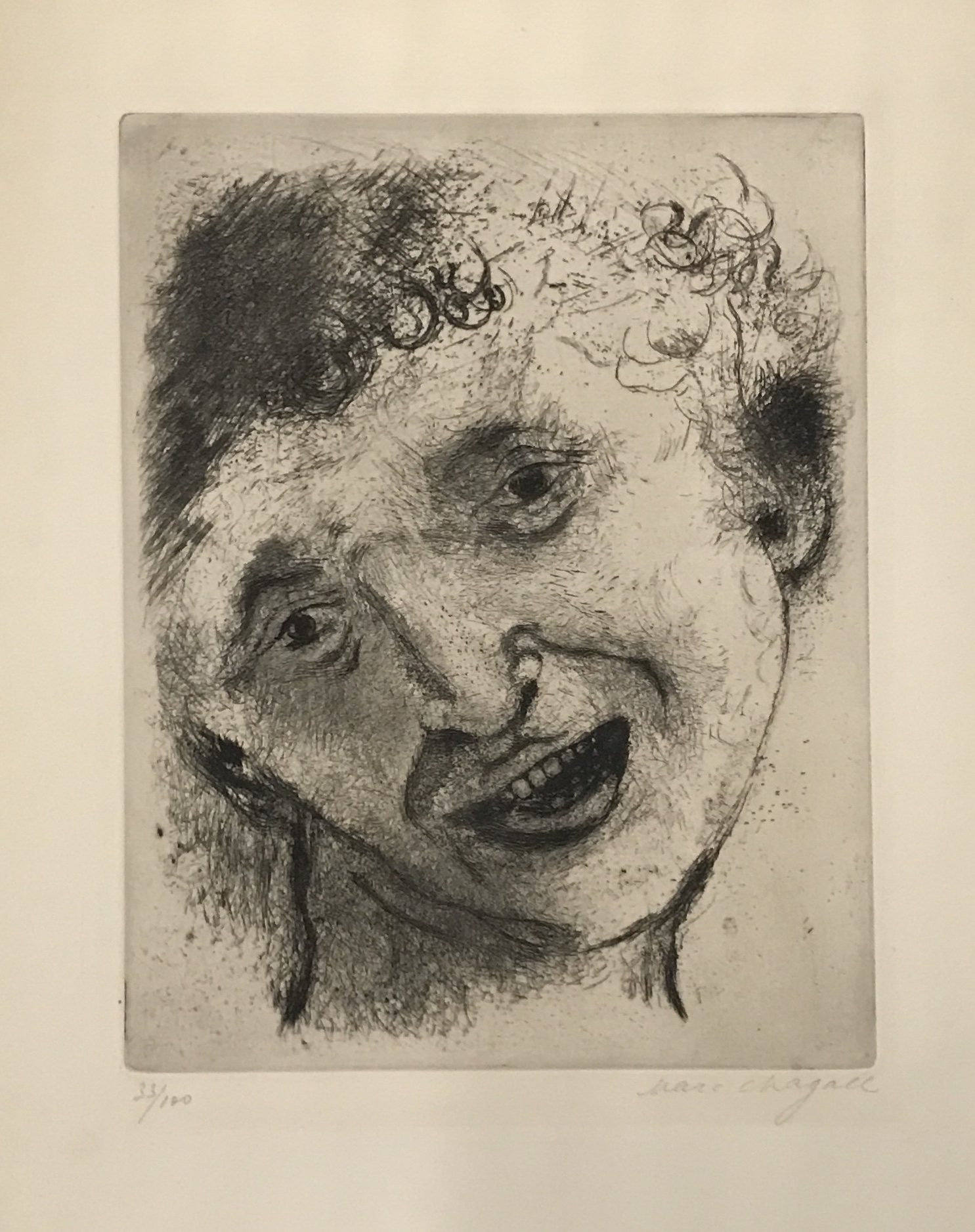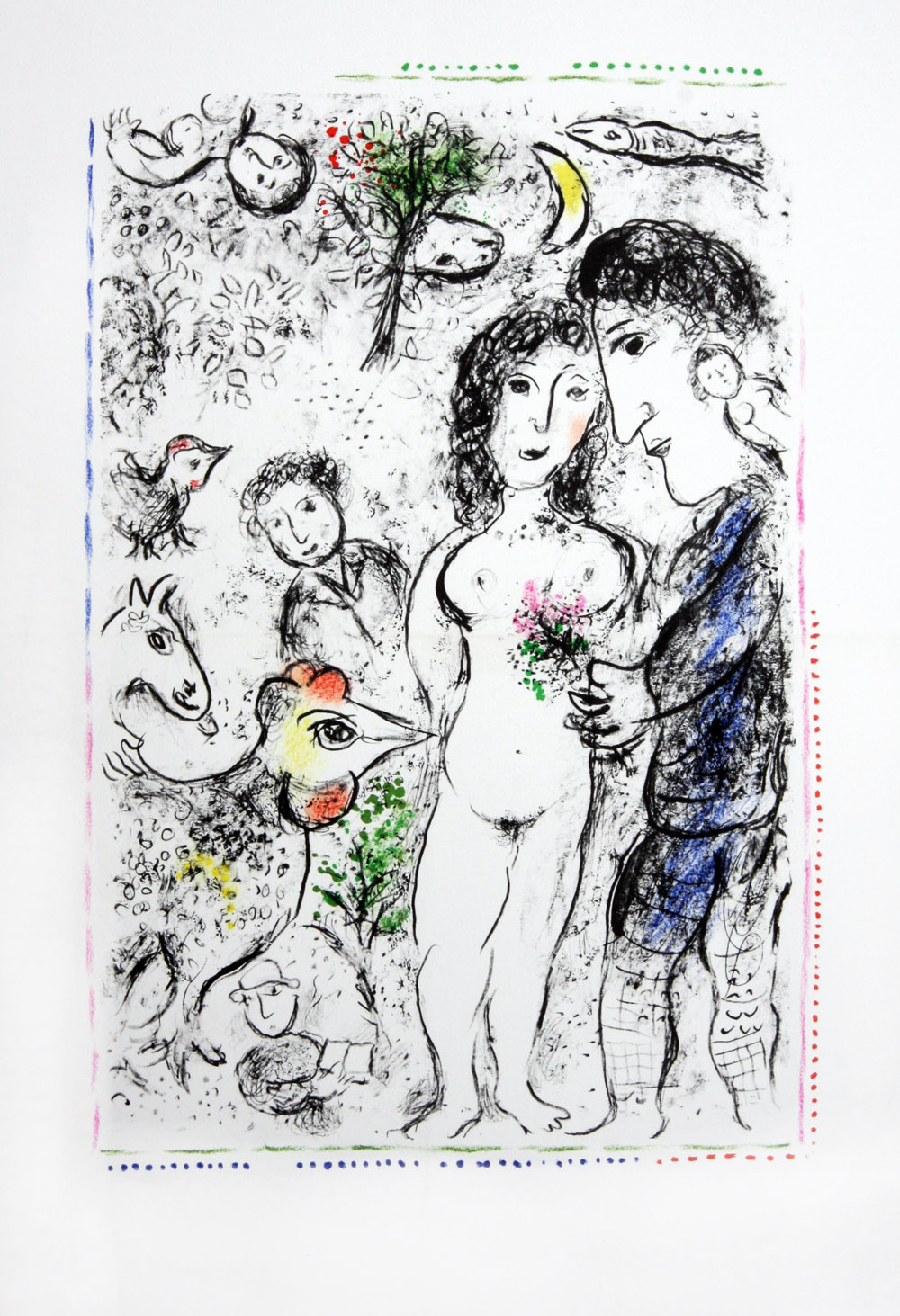Marc Chagall – Femme de Cirque
Marc Chagall, Femme de Cirque is an original Lithograph with Pochoir in colors on Arches paper from the signed and numbered edition of 150. Published by Guy Spitzer, Paris with his blindstamp. After a painting by the artist.
The whimsical Femme de Cirque depicts a beautiful, nude acrobat, captured in a private moment of concentration. She arcs her arms above her head, creating a curve that mimics those of her legs and hips. Chagall’s bold hues of red, green, and blue lend a dreamlike quality to this work, and his use of hand-applied pochoir contributes a sense of texture to this work. Circus scenes appear in many of Chagall’s works. For him, acrobats resembled figures in religious paintings and symbolized his disillusionment with Europe.
| Title | Femme de Cirque |
|---|---|
| Alt. Title | Circus Woman |
| Medium | Lithograph with Pochoir |
| Year | c. 1960 |
| Edition | 150 |
| Catalogue Raisonné | NA |
| Signature | Signed, numbered |
| Size | 31.25 x 25 (in) 80 x 63.5 (cm) |
| Price | Price on Request |
Description
Marc Chagall, Femme de Cirque is an original Lithograph with Pochoir in colors on Arches paper from the signed and numbered edition of 150. Published by Guy Spitzer, Paris with his blindstamp. After a painting by the artist.
The whimsical Femme de Cirque depicts a beautiful, nude acrobat, captured in a private moment of concentration. She arcs her arms above her head, creating a curve that mimics those of her legs and hips. Chagall’s bold hues of red, green, and blue lend a dreamlike quality to this work, and his use of hand-applied pochoir contributes a sense of texture to this work. Circus scenes appear in many of Chagall’s works. For him, acrobats resembled figures in religious paintings and symbolized his disillusionment with Europe.
At the outbreak of WWI Marc Chagall returned to Russia to marry his fiancee Bella Rosenfeld. Chagall’s undying love for Bella would be one of his artistic inspirations for the rest of his life, often appearing in Chagall’s graphic works as a curvaceous nude clad in pearls or an apparition watching over Marc Chagall at his easel. During WWI Marc Chagall and Bella had their first child, Ida (named after the Chagall’s mother). The Chagall family would remain in Russia throughout the war years and moved back to Paris in 1923.
In Paris, Marc Chagall formed a business relationship with art dealer Ambroise Vollard. Encouraged by Vollard to take on the art of printmaking, Marc Chagall created extraordinary etchings and lithographs at the Mourlot Atelier. The etchings and lithographs from this time brought Chagall international attention, especially the etchings for Les Fables de la Fontaine the French equivalent of Aesop’s Fables.
WWII forced Marc Chagall and his family to leave France again. Chagall narrowly escaped persecution from the Nazis by fleeing to the United States in 1941. While in the United States, Marc Chagall created set designs and costumes for highly acclaimed ballets and operas performed at the Metropolitan Opera in New York.
Marc Chagall art for sale
Femme de Cirque by Marc Chagall
Marc Chagall Circus Woman
Additional information
| Title | Femme de Cirque |
|---|---|
| Alt. Title | Circus Woman |
| Medium | Lithograph with Pochoir |
| Year | c. 1960 |
| Edition | 150 |
| Catalogue Raisonné | NA |
| Signature | Signed, numbered |
| Size | 31.25 x 25 (in) 80 x 63.5 (cm) |
| Price | Price on Request |
← Marc Chagall – Le Cirque au Clown Jaune
Marc Chagall – L’Ange du Jugement-Musee National Message Biblique →


